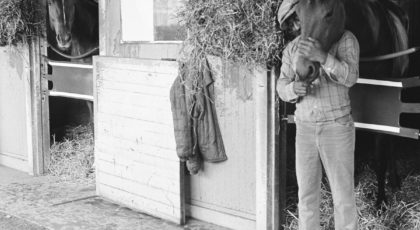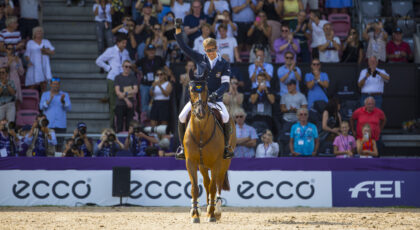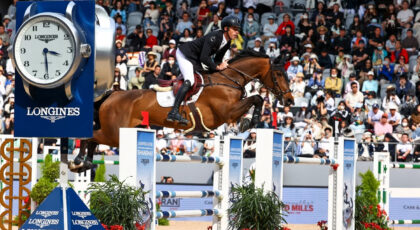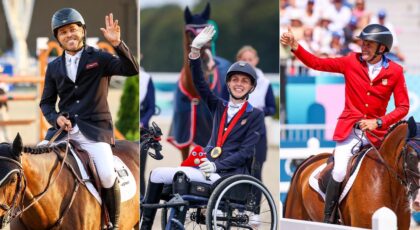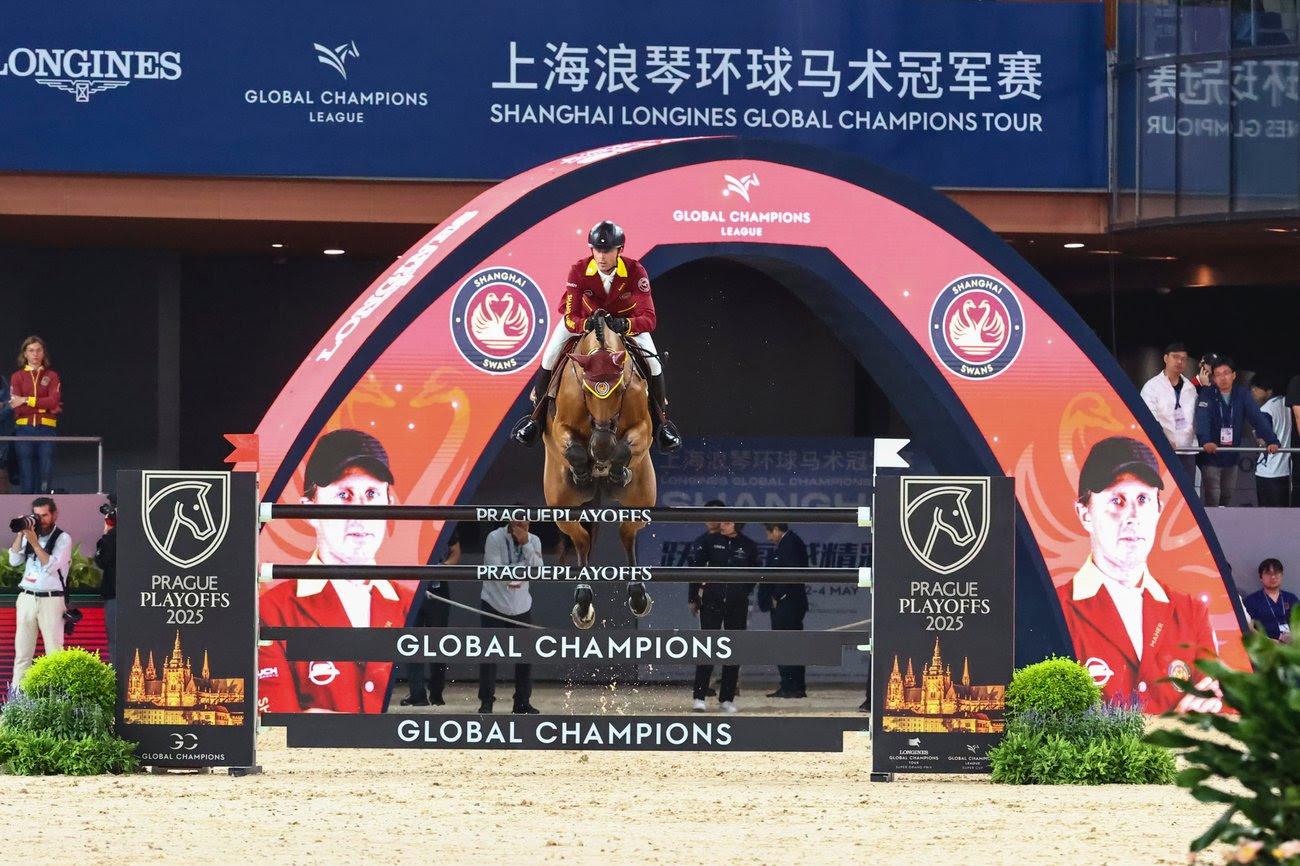I wasn’t sure what to write about today.
The topics are endless, and my three-year-old Warmblood True throws something new into the mix at almost every ride. This morning while we were working, he reminded me about play… and my serious topic intentions flew out the window.
Young horses have many traits in common. Fear of predators, new human objects, and unusual events is a big one. But another is playfulness. Left to their own devices, most youngsters buck and spin in their pastures, kick out at imaginary trolls, and gallop around for no reason. Racing another horse along a pasture fence is another common activity, back and forth.
Today True and I were working on canter departs and canter balance in a small arena. In future posts, I’ll explain why canter balance is such an issue for a youngster and how to help him learn it. But for now, let’s focus on True’s spring play. Birds are part of spring, and my little trooper is afraid of birds, especially small fast ones. I call them “Killer Birds” because of True’s desire to spin and bolt each time one of these ninjas is seen or heard.
So there we are, cantering along in an outdoor arena. My trusty baby has just stepped into the correct lead from a walk. I’ve been teaching him this maneuver for months and am delighted that today he achieves it four times, twice on each lead. I give him a long stroke while he’s cantering and tell him what a champ he is!
It’s at that moment when the little white butterfly shows up, flitting across True’s path in that happy up-and-down motion that’s got tiny zig-zags built into it. The butterfly is only about two inches in width with wings spread out.
Silly me: I wonder if True will even notice.
He does—uh-oh, is this gonna be the Killer Bird maneuver?
No. Instead, he pops his neck inward as if to avoid touching the insect that’s now flying at the level of his eye. Then he bats at the butterfly with one front leg. Of course, I don’t want True to learn this trick, but it’s so cute that I have to chuckle. I ignore it and just keep cantering.
The butterfly follows along with True’s face, now flying in ziggy circles near his right eye. True extends his right front leg, straightened at the knee, and swats at the butterfly again. This time, I laugh. I know, I know: That’s the last thing I should do. But again… CUTE.
True and the butterfly kept at it down the length of the arena, until the butterfly headed off over surrounding meadows.
It was a great morning ride. Four canter departs from a walk, all correct leads, cantering in balanced circles, and the happy chase of a spring butterfly. I hope you had a good ride today, too.
Related reading:
Brain-Based Horsemanship is a weekly column that chronicles Janet Jones, PhD, and her journey with True, a Dutch Warmblood she trained from age three using neuroscience best practices. Read more about brain-based training in Jones’ award winning book Horse Brain, Human Brain.
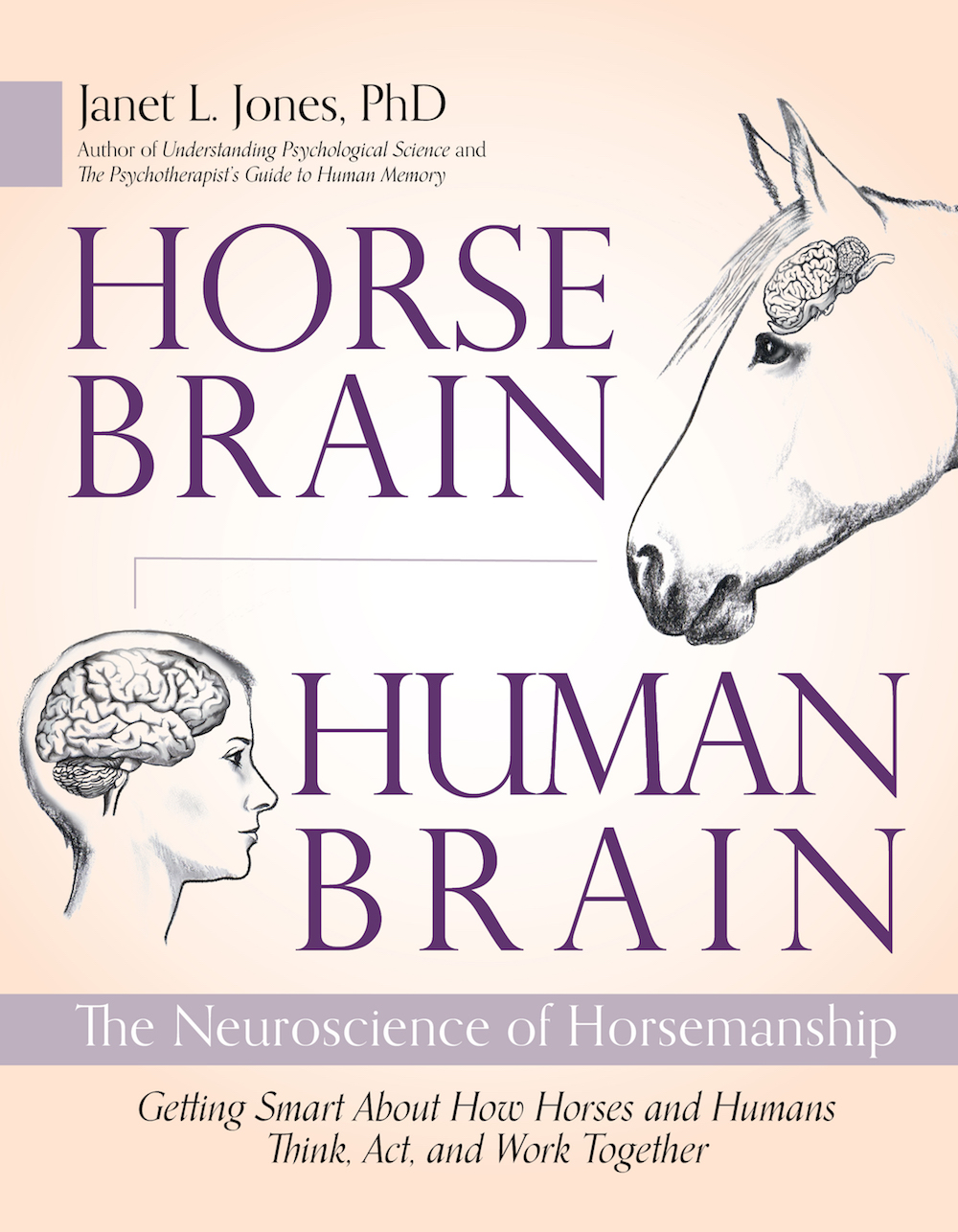
This story originally appeared on janet-jones.com. It is reprinted here with permission.


 April 12, 2023
April 12, 2023 















